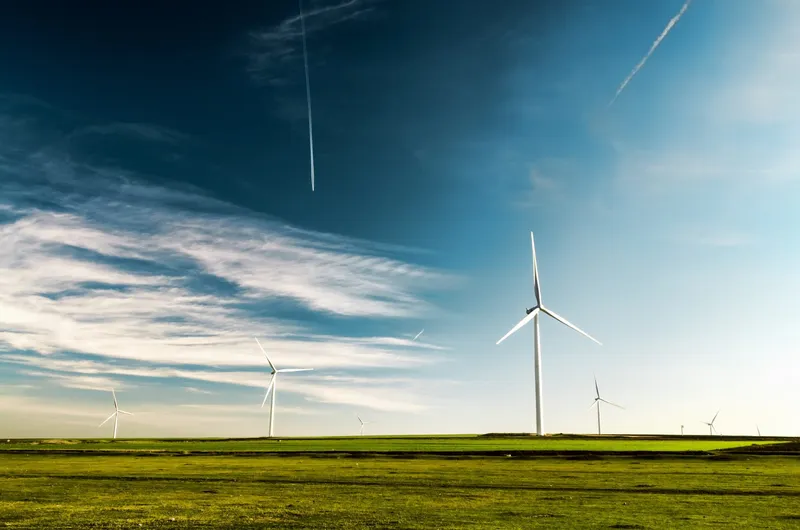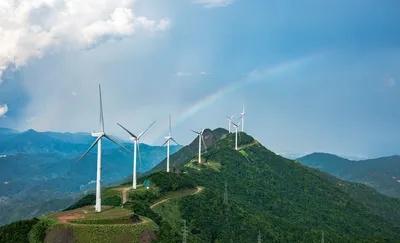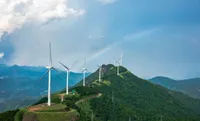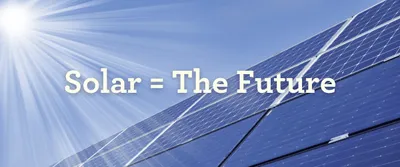Your complete guide to ethical, clean energy in New Zealand
31/03/2019

NZ is an amazing place to live – we’re famed around the world for our pristine and breathtaking landscapes. Currently, 65% NZ’s electricity sector is powered by renewable energy that includes Wind, Hydro and Solar Generation. Although we’re perceived as a clean and diligent attitude towards protecting our natural Taonga (treasures). We could a lot more to reduce our carbon footprint, especially in the electricity sector.
Discover the importance of renewable energy and why waving goodbye to fossil fuels is the key to protecting NZ’s future.
What is ethical and clean energy?
What makes energy ‘clean’ and ‘ethical’? The two terms can mean different things depending on who you are and what you believe, but the standard usage in our industry is that:
Ethical energy refers to means of energy production, generation, and use that don’t pose risks to present or future generations. For example, ethical energy won’t do harm to ecosystems or people, while fossil fuels are a non-renewable resource that will be lost to future generations.
There are still ethical questions involved when considering renewable energy sources – such as access to these resources being restricted to wealthy countries or individuals. However, as the world continues to embrace renewable energy, prices come down and access improves.
Clean energy refers to means of energy production, generation, and use that does not rely on fossil fuels or other processes that release greenhouse gases and impact our environment. As New Zealand has an international reputation as the ‘clean, green’ country, it’s important we remain true to ourselves and embrace renewable and clean energy sources.
What types of clean and ethical energy are available?
Solar energy
Our sun is a star – a brilliant glowing ball of hot energy fuelled by nuclear reactions. It’s surface temperature is a whopping 5,500 degrees Celsius, which is why we can still feel its heat standing 150 million kilometers away on earth.
If we can collect the sun’s energy, we can make use of one of the most abundant, continually available, and completely free sources in the universe. After manufacture and installation, it’s also pollution-free and causes no greenhouse gases to be emitted. It’s also available to us – even one a cloudy day, the sun’s energy can still be collected (although obviously sunny days are best!)
We use solar panels to collect the sun’s energy. Each panel consists of a metal frame containing a layer of silicon cells, a glass casing, protective insulation, and wiring to allow current to flow to the cells. Silicon is a non-metal that can conduct energy, allowing it to absorb sunlight and convert it to electricity. The light hitting the silicon cells causes electrons to move, creating the electric current – we call this the “photovoltaic effect.”
Solar panels convert sunlight into direct current (DC) electricity. Because most electrical items in the world – including our homes, electric cars, businesses, and appliances – operate with alternating current (AC) electricity, we then need an inverter to convert the DC to AC. Once the power has been converted to AC, it’s ready for use.
Because of the space needed for large scale photovoltaic farms, solar isn’t a viable option as a large-scale replacement for our dependency on \fossil fuels. However, if more businesses and homes placed solar panels on their roofs, we’d be able to significantly reduce our reliance on other forms of electricity. Plus, with your own solar panels you can feed solar power back into the grid, and offsetting your electricity bill.
According to NASA, we’d need to explode more than 100 billion tons of dynamite every single second to even match the energy the sun produces. More solar energy hits the earth every day then our current population can use in a year. Isn’t it time we started making better use of the free energy we’re given?
Wind energy
Another source of energy that’s created naturally by our environment is wind. Wind provides kinetic energy that can be ‘harvested’ with turbines. The wind spins the turbine blades, that spin a shaft to generate electricity. The faster the turbines spin, the more energy is produced – but if the blade spin off fast they can get damaged, which is why wind farms are turned off during big storms!
Think of a wind turbine as a backwards fan – a fan uses electricity to spin blades to make wind. A turbine does the opposite – it uses wind to spin blades to make electricity.
An individual home or business can use a single small turbine, but they’re usually more efficient as a large-scale wind farm feeding power into the national grid. Each large turbine can ‘farm’ enough wind to power 1,500 households or 4,000 electric vehicles for an entire year.
Wind farms are an ethical and clean source of energy – our wind resource is infinitely renewable, and farming wind doesn’t produce harmful gases.
New Zealand is one of the few countries in the world uniquely suited to utilizing wind power on a large scale. Winds consistently whip across our country, providing us with productive wind farms that significantly outperform international averages.
New Zealand currently has 17 wind farms scattered across the countryside, supplying around 6% of our annual electricity generation – enough to power 300,000 homes. New wind farms are currently being developed to increase this output in the coming years, and its estimated we could easily generate more than 40% of the power we need with wind. The more wind farms we build, the lower our energy bills will get, and we’ll be able to preserve our lifestyles and environment for generations to come.
Hydro energy
Hydro power is generated in a similar way to wind power, only instead of wind we use the energy of falling water.
Water builds up a lot of pressure as it moves downhill. That’s why when you stand under a waterfall you can feel a huge amount of pressure against your body.
A hydro plant forces falling water into a narrow pipe to increase the pressure, then uses that water to spin a turbine. The turbine powers a generator that produces power. Hydro can produce a huge amount of energy – often much more than can be effectively stored. Instead of trying to store more energy, producers of hydro build huge dams to control the flow of water. This way, they produce exactly the amount of power needed.
This also means we can conserve water to power the hydro dams while we have a good supply of solar or wind power, and ramp up our hydro when wind/solar resources drop. New Zealand’s current hydro resources supply around 60% of our power needs, and is one of the cheapest and most efficient forms of generation.
All of these systems – wind, solar, hydro – can integrate together to create a completely renewable energy supply that will power New Zealand for decades to come.
What about natural gas, “clean” coal, and nuclear energy?
From a purely scientific perspective, an argument could be made for natural gas, “clean” coal, and nuclear power being sources of clean energy. It all depends on how you define clean.
To us, none of these solutions provide the standards we expect from clean energy. When we talk about an energy source being clean, we’re not just referring to its efficiency or the fact it’s a naturally-occuring product, but also about the extraction, refining, and waste products associated with its use.
For example, coal has a high human cost, as detailed in a 2012 Planet Save article. Removal of coal has permanently destroyed more than 500 Appalachian mountains, and people living near these areas are 50% more likely to die of cancer and 42% more likely to be born with birth defects. And we all understand the deadly potential of radioactive waste from nuclear energy.
Just because an energy source might be able to be defined as clean, it doesn’t make them ethical. There is nothing ethical about releasing toxic pollutants into the atmosphere, negatively impacting the health of thousands of people, and destroying whole ecosystems. There is a better way.
What about non-renewable energy?
Currently, approximately 85% of the world’s energy needs are supplied using fossil fuels – coal, oil, and natural gas. These fuels are created by biological matter pressurised underwater for millions of years within the earth’s crust.
It seems hard to believe, but fossil fuels are the cheapest and easiest fuel to extract and use. As humankind progressed from the industrial revolution with rapidly-growing needs for fuel, we’ve arranged our entire lives around fossil fuels. But change needs to take place now.
Although the issue of demand exceeding supply will rear its head in the near future, the real issue right now is the emissions created by fossil fuels. In order for us to transition to a low emissions economy and reduce our carbon figure, we need to support cleaner electricity generation. It is no longer okay to keep relying on poisonous fossil fuels when renewable energy is available.
What can I do as a consumer?
If you’re concerned about the degradation of the environment and the continued releasing of toxic chemicals into the atmosphere from the burning of fossil fuels, you have the power to make a difference.
Companies like Ecotricity are working hard to give consumers the option of using renewable energy. By supporting these clean and ethical energy sources, we enable the industry to continue to grow and invest in infrastructure, so future generations will be free of fossil fuels.
Our aim is to provide Kiwi families and Kiwi businesses with 100% pure renewable power, as well as electrifying NZ’s vehicles.
We need more consumers to vote with their energy dollars. Ecotricity is the only provider of 100% carbonzero Certified Renewable Electricity. We source our electricity from sustainable and certified renewable electricity generation including carbonzero Certified hydro and wind from the Monowai (and shortly Roaring Meg) hydro dams and Flat Hill Wind Farm.
We are also the leader in supporting solar by purchasing solar generated electricity from a growing number of our solar customers.
Find out how your household or business can support renewable energywith Ecotricity.







